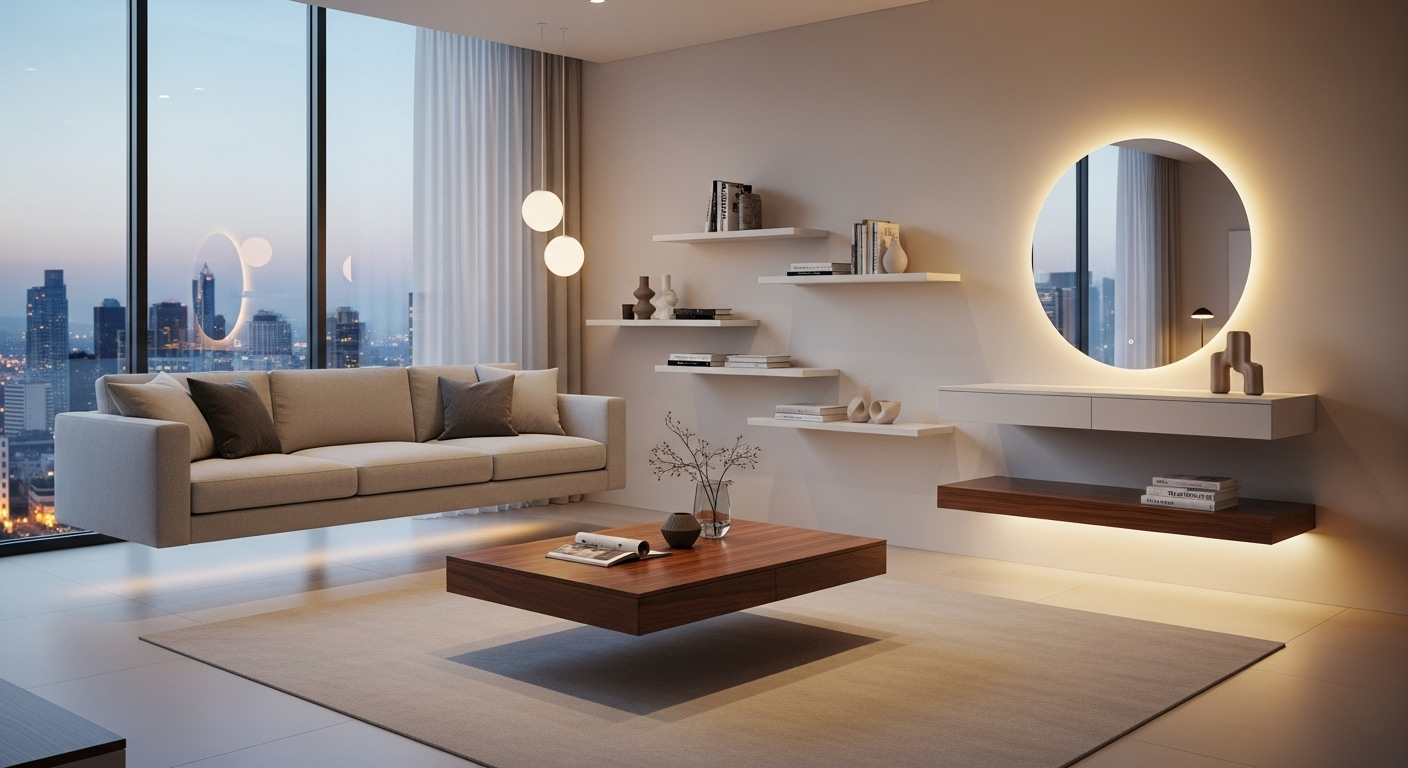The Enchanting World of Floating Furniture
Imagine walking into a room where sofas hover effortlessly above the floor, tables seem to defy gravity, and shelves appear to float on air. This isn't a scene from a futuristic movie, but rather the latest trend taking the interior design world by storm: floating furniture. In this article, we'll dive into the captivating realm of suspended decor, exploring its origins, benefits, and how it's reshaping our living spaces.

The Illusion of Weightlessness
At the heart of floating furniture’s appeal is the visual magic it creates. By eliminating visible supports or legs, these pieces seem to defy gravity, lending an air of lightness and spaciousness to any room. This optical illusion not only adds intrigue but also serves practical purposes. Floating vanities in bathrooms make cleaning easier, while suspended nightstands create a sense of openness in compact bedrooms.
Engineering Marvel: How Floating Furniture Works
The secret behind floating furniture lies in clever engineering and high-strength materials. Most pieces use hidden wall mounts or carefully concealed support systems. For instance, floating beds often employ a central support beam that’s camouflaged by the mattress and bedding. Advances in materials science have also played a crucial role, with manufacturers using reinforced plastics, aerospace-grade aluminum, and high-tensile steel to ensure durability and safety.
Transforming Spaces with Suspended Style
Incorporating floating furniture into your home can dramatically alter the feel of a space. In living rooms, floating entertainment centers create a sleek, modern look while freeing up floor space. Kitchens benefit from floating islands that can be moved or tucked away when not in use. Even outdoor spaces are getting the floating treatment, with suspended fire pits and hanging daybeds adding a touch of whimsy to patios and gardens.
The Psychological Impact of Floating Design
Beyond aesthetics, floating furniture can have a profound psychological effect on inhabitants. The increased floor visibility creates an illusion of more space, which can reduce feelings of clutter and claustrophobia. This perceived openness can lead to reduced stress levels and improved mood. Additionally, the unique nature of floating pieces often becomes a conversation starter, fostering social interaction and pride in one’s living space.
Challenges and Considerations
While floating furniture offers numerous benefits, it’s not without challenges. Installation can be complex, often requiring professional help to ensure proper mounting and weight distribution. There are also limitations to what can be safely suspended, with heavier items like pianos or large bookcases typically remaining ground-bound. Homeowners should also consider the structural integrity of their walls before installing floating pieces, particularly in older buildings.
Customization and Personalization
One of the most exciting aspects of the floating furniture trend is the opportunity for customization. Designers are creating modular floating systems that allow homeowners to configure their spaces according to their needs and preferences. From adjustable-height desks to reconfigurable shelving units, these pieces adapt to changing lifestyles and spatial requirements.
The Future of Floating: What’s Next?
As technology continues to advance, we can expect even more innovative floating designs. Some designers are experimenting with magnetic levitation to create truly floating furniture, while others are incorporating smart home technology into suspended pieces. Imagine a floating coffee table that rises to dining height at mealtime or a bed that adjusts its height for optimal comfort throughout the night.
Embracing the Float: Tips for Incorporation
For those looking to incorporate floating furniture into their homes, start small. A floating shelf or side table can be a great way to test the waters. When choosing pieces, consider the overall style of your space and opt for items that complement rather than dominate. Remember that lighting plays a crucial role in highlighting floating furniture, so consider under-mount LEDs or strategic spotlighting to enhance the floating effect.
In conclusion, floating furniture represents a fascinating intersection of design, engineering, and psychology. As our homes continue to evolve, these gravity-defying pieces offer a unique way to maximize space, create visual interest, and transform the way we interact with our living environments. Whether you’re a minimalist seeking clean lines or a design enthusiast looking for the next big thing, floating furniture offers a compelling vision of the future of home decor.





